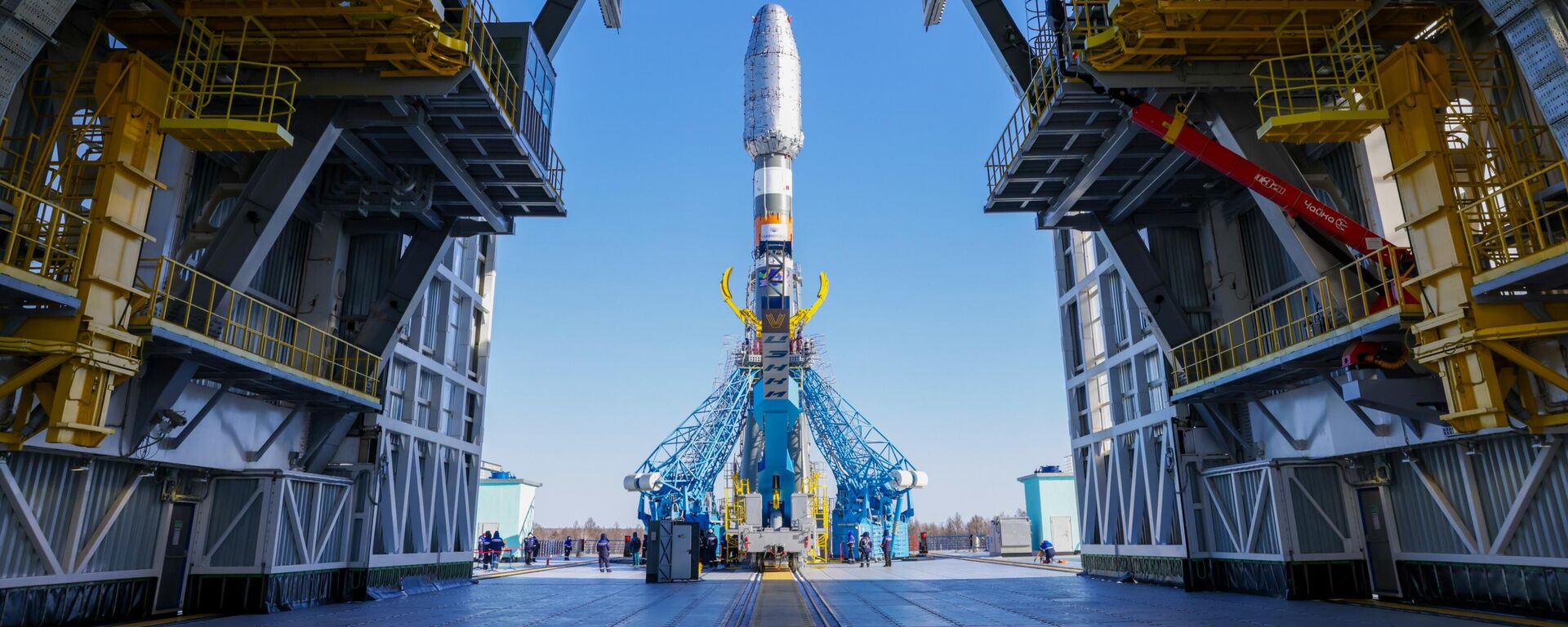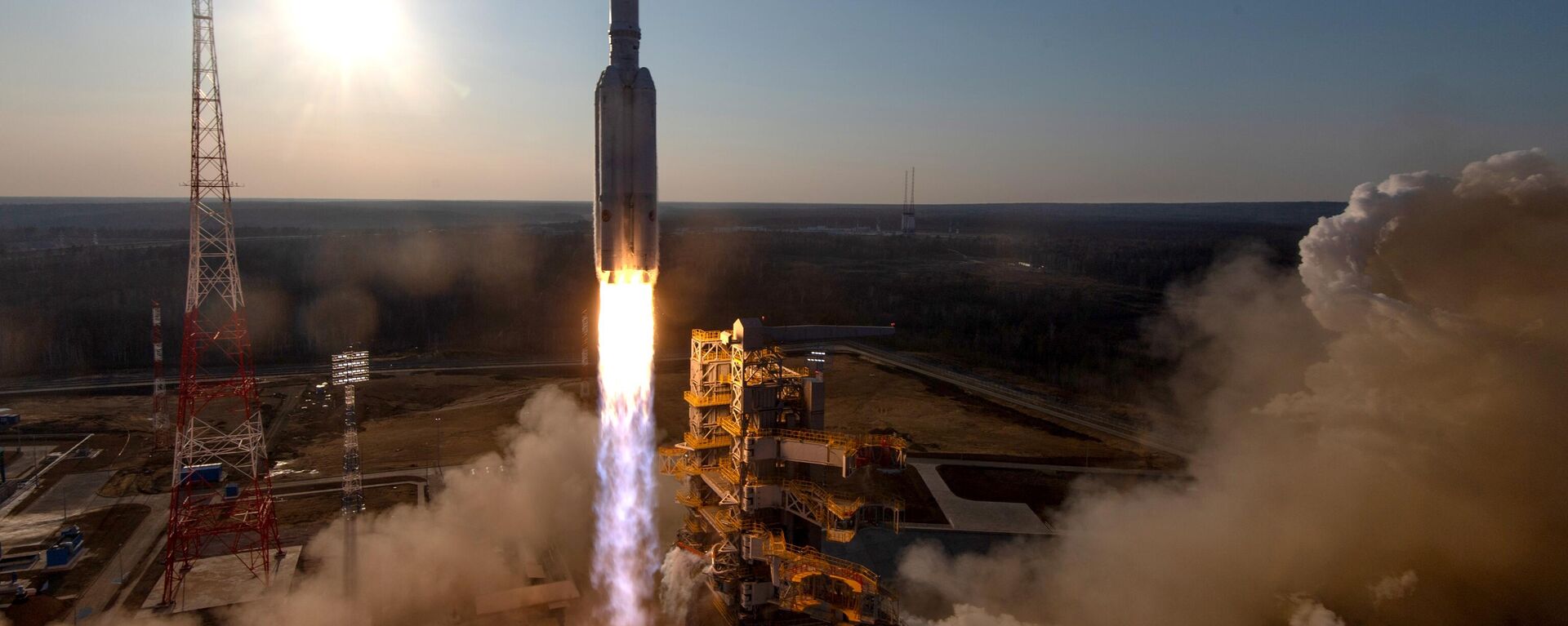https://sputnikglobe.com/20241118/russia-develops-contactless-method-to-protect-the-iss-from-dangerous-space-debris-1120918742.html
Russia Develops Contactless Method to Protect the ISS From Dangerous Space Debris
Russia Develops Contactless Method to Protect the ISS From Dangerous Space Debris
Sputnik International
Scientists from Samara University have proposed a groundbreaking solution to shield space stations and satellites from hazardous debris. Their innovative device, designed to «blow» debris off dangerous orbital paths, promises to prevent accidents in the vacuum of space and extend the operational lifespan of space infrastructure.
2024-11-18T12:27+0000
2024-11-18T12:27+0000
2024-11-18T12:27+0000
beyond politics
science & tech
russian science foundation
international space station (iss)
space exploration
russia
samara
https://cdn1.img.sputnikglobe.com/img/07e8/05/15/1118552727_0:29:2755:1579_1920x0_80_0_0_3233711ca3480903eba77425b350236a.jpg
The innovative device, designed to «blow» debris off dangerous orbital paths, promises to prevent accidents in the vacuum of space and extend the operational lifespan of space infrastructure. The findings are published in Acta Astronautica.Even a small piece of space debris can cause significant damage if it collides with a spacecraft. Larger debris, such as defunct satellites or old rocket stages, poses an even greater threat, potentially destroying large structures like the International Space Station (ISS), explained experts from the Samara National Research University named after Academician S.P. Korolev (Samara University).Currently, the only way to avoid collisions is to adjust the station’s orbit using either its onboard engines or those of docked spacecraft. Since 1999, the ISS has conducted 38 such maneuvers, each consuming considerable fuel resources.The researchers at Samara University propose a new approach: equipping the station with a specialized spacecraft capable of detaching when debris threatens. This device would fly towards the debris and use the thrust from its electric propulsion system to «blow» the debris off the hazardous orbit—akin to a hairdryer.Ledkov elaborated that the spacecraft would detach from the station, approach the debris to within 10 meters, and direct a stream of ions from its electric propulsion system onto the debris. These ions would impact the debris’ surface, generating a small braking force. Once the debris was safely diverted from its threatening orbit, the spacecraft would return to the ISS for refueling and maintenance.Ledkov emphasized that under the most favorable alignment of the station and a large object, fuel consumption for the maneuver could be reduced nearly tenfold.The project required solving numerous scientific challenges, with active involvement from master’s students specializing in «Mechanics and Mathematical Modeling» at Samara University’s Institute of Aviation and Rocket-Space Technology.The research was supported by the Russian Science Foundation.
https://sputnikglobe.com/20241110/russia-has-plans-to-develop-moon-deep-space—kurchatov-institute-head-1120837353.html
https://sputnikglobe.com/20241004/angara-system-to-play-key-role-in-providing-russia-with-independent-access-to-space–putin-1120411863.html
russia
samara
2024
News
en_EN
https://cdn1.img.sputnikglobe.com/img/07e8/05/15/1118552727_307:0:2450:1607_1920x0_80_0_0_5246d299cf8e29c4d6b0dce4ea8e43fa.jpg
space exploration, russia space, space debris, space defense, russian space, samara space, space race
space exploration, russia space, space debris, space defense, russian space, samara space, space race
Scientists from Samara University have proposed a groundbreaking solution to shield space stations and satellites from hazardous debris.
Even a small piece of space debris can cause significant damage if it collides with a spacecraft. Larger debris, such as defunct satellites or old rocket stages, poses an even greater threat, potentially destroying large structures like the International Space Station (ISS), explained experts from the Samara National Research University named after Academician S.P. Korolev (Samara University).
Currently, the only way to avoid collisions is to adjust the station’s orbit using either its onboard engines or those of docked spacecraft. Since 1999, the ISS has conducted 38 such maneuvers, each consuming considerable fuel resources.
The researchers at Samara University propose a new approach: equipping the station with a specialized spacecraft capable of detaching when debris threatens. This device would fly towards the debris and use the thrust from its electric propulsion system to «blow» the debris off the hazardous orbit—akin to a hairdryer.
“The challenge lies in the inability to accurately predict its trajectory over extended periods. Potential collision risks (close approaches to a dangerous distance) become known roughly two days before the event, at which point protocols for calculating an avoidance maneuver are initiated,” explained Alexander Ledkov, an associate professor at Samara University’s Department of Theoretical Mechanics.
Ledkov elaborated that the spacecraft would detach from the station, approach the debris to within 10 meters, and direct a stream of ions from its electric propulsion system onto the debris. These ions would impact the debris’ surface, generating a small braking force. Once the debris was safely diverted from its threatening orbit, the spacecraft would return to the ISS for refueling and maintenance.
“We identified 289 objects over 1 kg in mass that could theoretically pose a threat to the ISS. For each, we simulated a maneuver where the spacecraft detached, intercepted the debris’s orbital plane, approached within 10 meters, and redirected it using ion streams,” said the researcher.
Ledkov emphasized that under the most favorable alignment of the station and a large object, fuel consumption for the maneuver could be reduced nearly tenfold.
“In the most favorable scenario, where both the debris (e.g., a rocket stage weighing about 1,400 kg) and the ISS move in the same orbital plane, our method could save 90% of the fuel. A traditional ISS orbit correction requires around 2,000 kg of fuel, whereas our spacecraft would use just over 200 kg,” added Vladimir Aslanov, a professor at the Department of Theoretical Mechanics.
The project required solving numerous scientific challenges, with active involvement from master’s students specializing in «Mechanics and Mathematical Modeling» at Samara University’s Institute of Aviation and Rocket-Space Technology.
The research was supported by the Russian Science Foundation.



